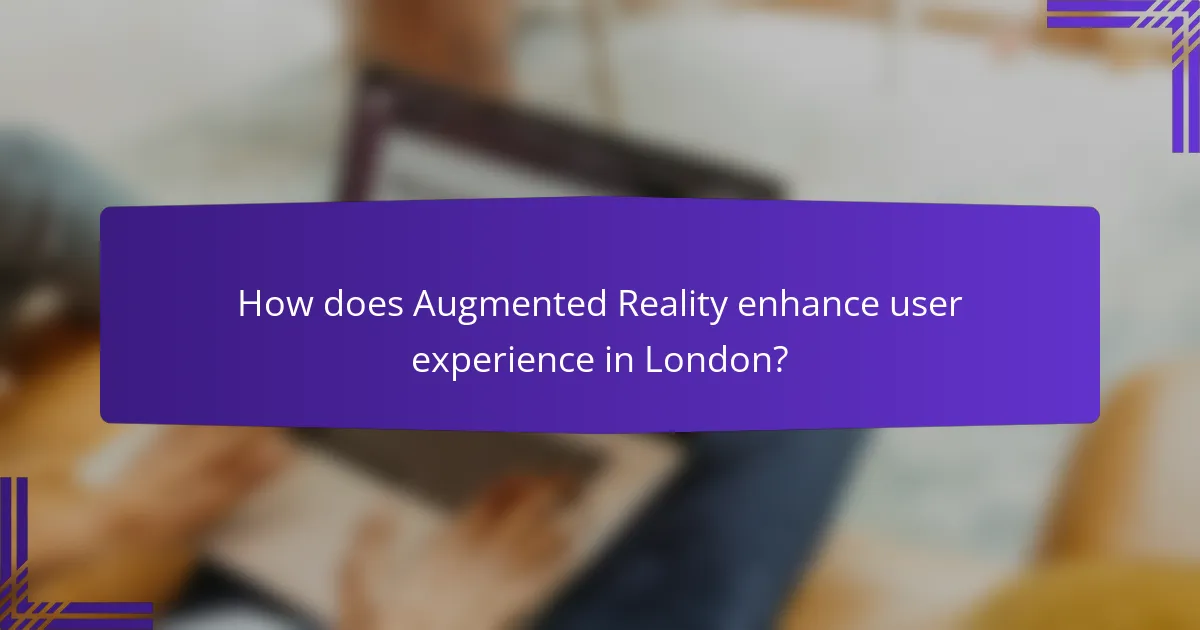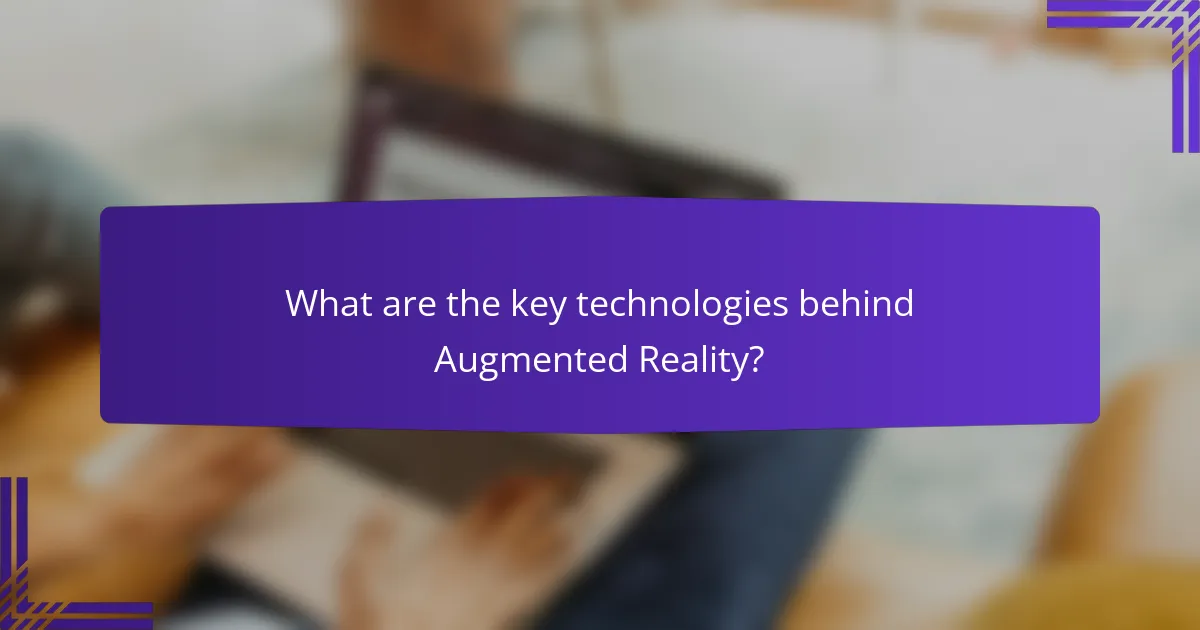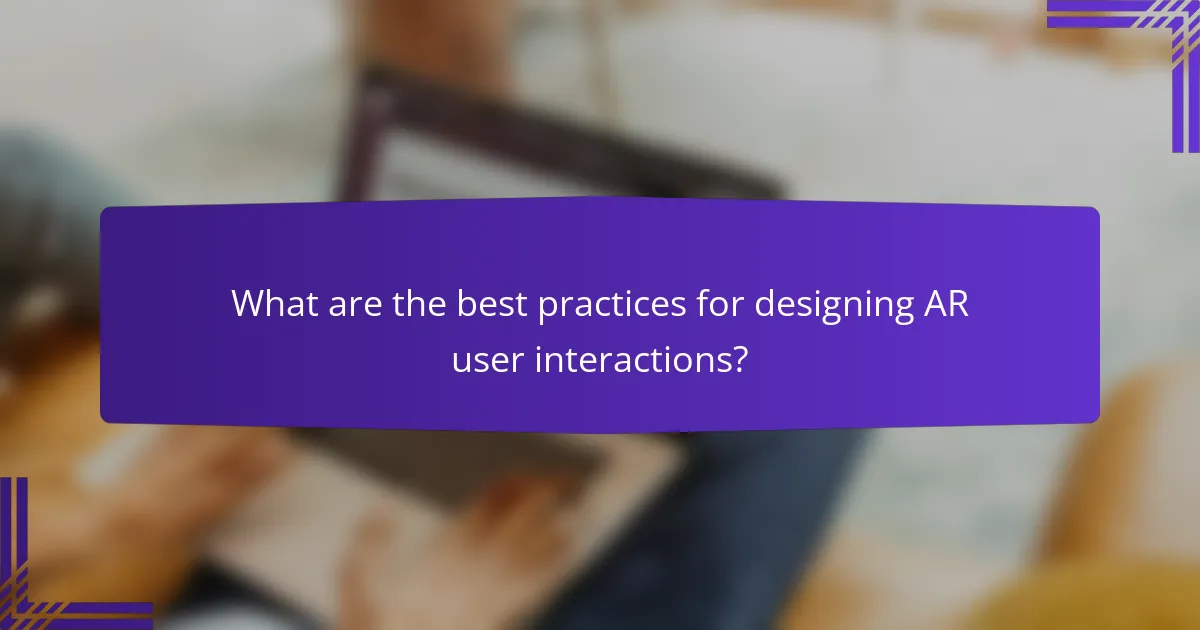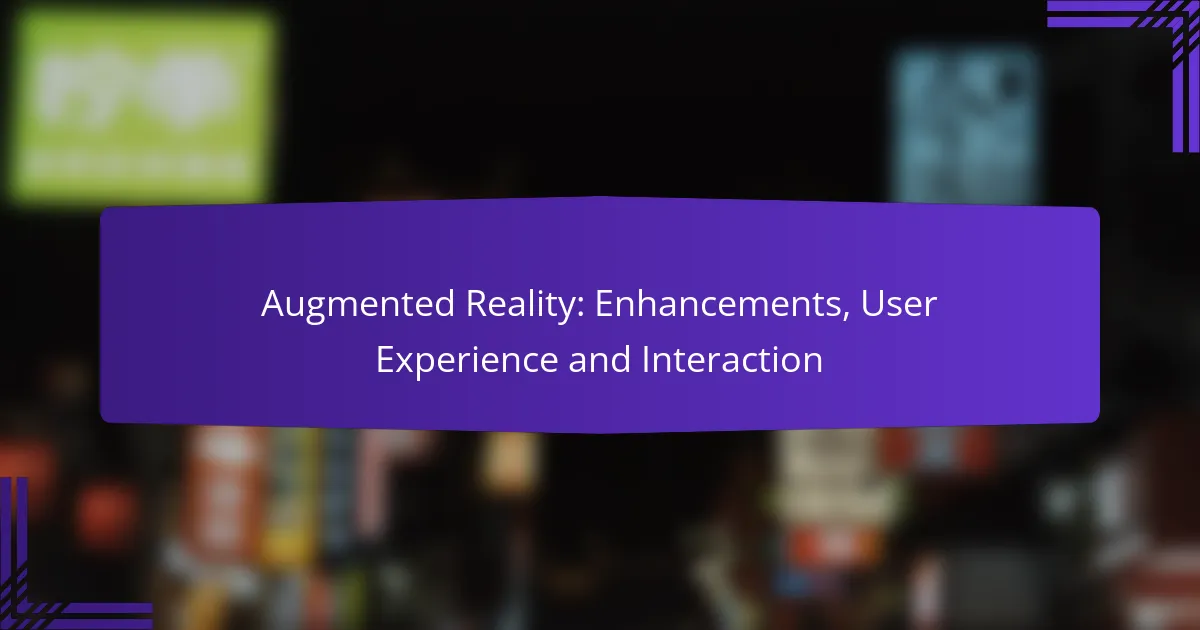Augmented Reality (AR) is revolutionizing user experiences by seamlessly integrating digital information with the physical world. This innovative technology enhances interactions across various activities, from gaming and shopping to navigation, creating immersive environments that engage users in unprecedented ways.

How does Augmented Reality enhance user experience in London?
Augmented Reality (AR) significantly enhances user experience in London by blending digital information with the physical world, creating interactive and engaging environments. This technology allows users to interact with their surroundings in new ways, improving activities such as gaming, shopping, and navigation.
Immersive gaming experiences
AR transforms gaming in London by integrating real-world locations into gameplay, making experiences more engaging. For instance, games like Pokémon GO encourage players to explore iconic sites such as the Tower of London while capturing virtual creatures.
These immersive experiences often utilize location-based features, allowing users to interact with their environment in real-time. Players can enjoy a mix of physical activity and gaming, enhancing both entertainment and social interaction.
Interactive retail environments
In London, AR is revolutionizing retail by creating interactive shopping experiences that attract customers. Retailers can use AR applications to allow shoppers to visualize products in their homes before purchasing, such as furniture or decor items.
Additionally, AR can enhance in-store experiences through virtual try-ons, enabling customers to see how clothing or accessories look without physically trying them on. This not only saves time but also increases customer satisfaction and reduces return rates.
Enhanced navigation tools
AR improves navigation in London by overlaying digital directions onto the real world, making it easier for users to find their way. Applications like Google Maps use AR to provide step-by-step navigation, displaying arrows and information directly on the street view.
These tools can also highlight points of interest, such as restaurants or historical landmarks, enriching the exploration experience. Users should ensure their devices are updated and have a reliable internet connection to fully utilize these features while navigating the city.

What are the key technologies behind Augmented Reality?
The key technologies behind Augmented Reality (AR) include computer vision, depth tracking, and simultaneous localization and mapping (SLAM). These technologies work together to overlay digital content onto the real world, enhancing user experiences through interactive and immersive environments.
Computer vision
Computer vision is essential for AR as it enables devices to interpret and understand visual information from the surrounding environment. This technology uses algorithms to analyze images and videos, allowing the system to recognize objects, track movements, and identify surfaces.
For example, when using AR applications, computer vision helps in detecting flat surfaces where virtual objects can be placed. This capability is crucial for ensuring that digital elements appear anchored and realistic within the user’s view.
Depth tracking
Depth tracking measures the distance between the device and objects in the environment, providing a three-dimensional understanding of space. This technology enhances the realism of AR experiences by allowing virtual objects to interact appropriately with real-world elements.
Devices often utilize sensors or cameras to gather depth information. For instance, smartphones equipped with LiDAR sensors can create detailed depth maps, enabling more accurate placement of digital content in relation to physical surroundings.
Simultaneous localization and mapping (SLAM)
SLAM is a technique that allows AR systems to build a map of an unknown environment while simultaneously keeping track of the device’s location within that space. This technology is vital for creating immersive experiences where virtual objects can be placed and moved in real-time.
SLAM algorithms process data from various sensors, such as cameras and accelerometers, to continuously update the environment map. This capability is particularly useful in dynamic settings, where the user may move around and interact with both virtual and real-world objects seamlessly.

How is Augmented Reality transforming industries in the UK?
Augmented Reality (AR) is significantly transforming various industries in the UK by enhancing user experiences and interactions. It integrates digital information with the real world, improving efficiency, engagement, and decision-making across sectors.
Healthcare applications
In healthcare, AR is revolutionizing patient care and surgical procedures. Surgeons can overlay critical information, such as 3D models of organs, directly onto the patient during operations, which enhances precision and reduces risks.
Additionally, AR applications assist in patient education by providing interactive visualizations of medical conditions and treatment plans. This helps patients understand their health better and make informed decisions.
Education and training solutions
AR is enhancing education and training by providing immersive learning experiences. In the UK, schools and universities are using AR to create interactive lessons that engage students more effectively than traditional methods.
For training professionals, AR simulations can replicate real-world scenarios, allowing learners to practice skills in a safe environment. This approach is particularly beneficial in fields such as engineering, medicine, and emergency services.
Real estate virtual tours
In the real estate sector, AR is transforming property viewing experiences. Potential buyers can take virtual tours of properties from the comfort of their homes, allowing them to visualize spaces and layouts without physical visits.
This technology not only saves time but also enhances the decision-making process by providing detailed insights into properties. Real estate agents in the UK are increasingly adopting AR tools to showcase listings more effectively and attract buyers.

What are the best practices for designing AR user interactions?
Effective AR user interactions prioritize intuitive design, ensuring users can easily navigate and engage with augmented elements. Best practices include focusing on user-centered design, providing clear feedback, and considering accessibility for all users.
User-centered design principles
User-centered design principles emphasize understanding the needs and behaviors of users when creating AR interactions. This involves conducting user research to gather insights and iterating on designs based on user feedback. For example, prototyping AR experiences and testing them with real users can reveal usability issues early in the design process.
Designers should also consider the context in which users will interact with AR. This includes the physical environment, user demographics, and the specific tasks users aim to accomplish. Creating personas can help tailor the experience to different user groups.
Feedback mechanisms
Feedback mechanisms are crucial in AR to inform users about their interactions and guide them through the experience. Visual cues, such as highlighting interactive elements or providing animations, can enhance understanding. Additionally, auditory feedback, like sounds or voice prompts, can reinforce actions and improve engagement.
Implementing haptic feedback can also enhance the user experience by providing tactile responses to interactions. Ensuring that feedback is timely and relevant helps users feel in control and reduces frustration.
Accessibility considerations
Accessibility considerations ensure that AR experiences are usable by individuals with varying abilities. This includes providing alternative text for visual elements and ensuring that interactions can be performed using different input methods, such as voice commands or gestures.
Designers should adhere to established accessibility guidelines, such as the Web Content Accessibility Guidelines (WCAG), to create inclusive experiences. Testing AR applications with users who have disabilities can uncover barriers and lead to improvements that benefit all users.

What are the challenges of implementing Augmented Reality?
Implementing Augmented Reality (AR) involves several significant challenges that can hinder its effectiveness and user experience. Key issues include technical limitations, user adoption barriers, and privacy concerns that must be addressed for successful integration.
Technical limitations
Technical limitations in AR often stem from hardware constraints, such as processing power and battery life. Devices must be capable of rendering high-quality graphics in real-time, which can be demanding on mobile devices.
Additionally, the accuracy of AR experiences relies on advanced sensors and cameras, which may not be present in all devices. For example, lower-end smartphones may struggle to deliver a smooth AR experience, leading to frustration among users.
User adoption barriers
User adoption of AR technology can be slow due to a lack of awareness and understanding of its benefits. Many potential users may not see the immediate value of AR applications in their daily lives, which can limit engagement.
Furthermore, the learning curve associated with new AR applications can deter users. Ensuring that AR experiences are intuitive and easy to navigate is crucial for increasing user acceptance and usage.
Privacy concerns
Privacy concerns are a significant challenge in AR, as many applications require access to personal data and location information. Users may be hesitant to share this data, fearing misuse or breaches of their privacy.
To mitigate these concerns, developers should prioritize transparency about data usage and implement robust security measures. Clear privacy policies and user consent options can help build trust and encourage wider adoption of AR technologies.

How do AR applications compare in terms of user engagement?
AR applications generally enhance user engagement significantly compared to traditional interfaces. They create immersive experiences that encourage interaction, leading to longer session times and increased user satisfaction.
Factors Influencing User Engagement in AR
User engagement in AR applications is influenced by several factors, including interactivity, content relevance, and ease of use. Applications that allow users to interact with virtual objects tend to keep users engaged longer. Additionally, content that is personalized or contextually relevant can enhance the overall experience.
Another critical factor is the usability of the application. If users find it intuitive and easy to navigate, they are more likely to engage with the content. Poorly designed interfaces can lead to frustration and disengagement.
Examples of Engaging AR Applications
Popular AR applications like Pokémon GO and Snapchat filters illustrate effective user engagement. Pokémon GO encourages users to explore their surroundings while capturing virtual creatures, fostering social interaction and physical activity. Snapchat filters allow users to enhance their photos with fun effects, leading to increased sharing and interaction.
In retail, applications like IKEA Place let users visualize furniture in their homes, making the shopping experience more interactive and personalized. This not only keeps users engaged but also aids in decision-making.
Measuring User Engagement in AR
Measuring user engagement in AR applications can involve various metrics, such as session duration, frequency of use, and user retention rates. Tracking how long users spend interacting with AR features can provide insights into their level of interest and satisfaction.
Additionally, analyzing user feedback and behavior can help developers understand what aspects of the application are most engaging. Tools like heatmaps can show which features users interact with most, guiding future improvements.
